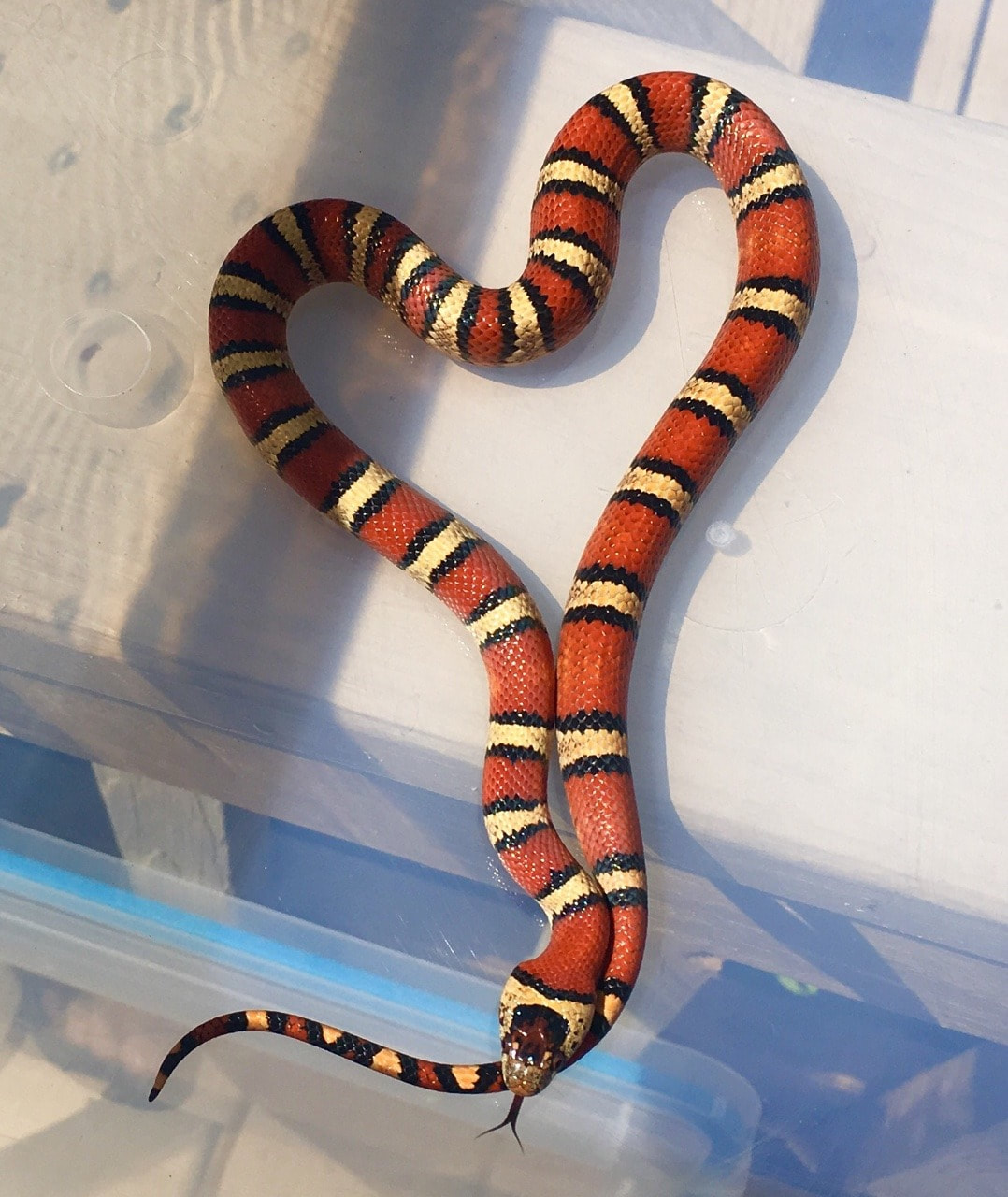

The real reason they hang around barns is because of the critters they like to eat (more on that in a bit). The truth is, Eastern Milksnakes aren’t concerned with cows, nor do they drink milk. Consequently, a myth was created which claimed that this species snuck into barns at night to drink milk from cows. Eastern Milksnakes are often found in and around old barns and agricultural facilities. The common name “Milksnake” actually stems from where these snakes like to spend their time, oddly enough. Regardless of what they resemble, Eastern Milksnakes are in fact both non-venomous and completely harmless. Some biologists believe these contrasting colors evolved to mimic venomous species, and signal to would-be predators that they’re not worth eating. Juvenile Eastern Milksnakes are much more contrasting than adults. Respecting the snake’s personal space both minimizes the chance of you mistaking a venomous species for a non-venomous one, and it also prevents the snake from expending energy while trying to get away. Quick disclaimer: Some distinguishing features are subtle and difficult to tell from a distance, so it’s always best to avoid handling snakes. They can grow to be 4 ft in length, though most adults average out around 2 ft. One additional characteristic typical of Eastern Milksnakes is the “Y” or “V” shaped blotch typically found on their neck/head area (see photo above). The genus name “ Lampropeltis” roughly translates into “shiny shield”, which is in reference to their reflective smooth scales (Copperheads, conversely, have keeled scales and appear more matte and less reflective). Adults tend to have variable brick red to brownish blotches over a grayish base color, whereas juveniles are more consistently bright red and white (much like a candy cane). ID TIPS/DESCRIPTIONĮastern Milksnakes are stunning reptiles, and a personal favorite of many snake enthusiasts. Let’s take a closer look at this interesting snake species. The truth is, not only are Eastern Milksnakes completely harmless, they actually make pretty decent neighbors. Because they bear a slight resemblance to the venomous (but also misunderstood) Northern Copperhead, they’re often senselessly persecuted by people. Glad to read it's not.Eastern Milksnakes ( Lampropeltis triangulum) are among the most misunderstood snake species we have in Pennsylvania. I wasn't sure what it was and didn't know if it was harmful or not. Luckily she seemed uninterested after a minute of investigating it. In various parts across its distribution, milk snakes often abide in rocky slopes. Typically, milk snakes live in forested regions however, in some regions they can be located in open prairies. Red to black, venom lack." Habitat:Īcross the wide range of this species, habitat varies. "Red next to black is a friend of Jack red next to yellow will kill a fellow." "Red and yellow will kill you fellow Red and black is friend Jack." "Red on yellow, deadly fellow Red on black, venom lack." "Red on yellow will kill a fellow, but red on black is a friend of Jack." While both milk snakes and coral snakes possess transverse bands of red, black and yellow, a common mnemonic can be used to properly distinguish between the deadly coral snake and the harmless milk snake: Some milk snakes have a striking resemblance to coral snakes and this mimicry (known as Batesian mimicry) likely scares away potential predators. However, red blotches instead of bands are seen in some populations. They have smooth and shiny scales and their typical color pattern is alternating bands of red-black-yellow or white-black-red. Milk snakes grow 20 to 60 inches (51 to 150 cm) long.


 0 kommentar(er)
0 kommentar(er)
